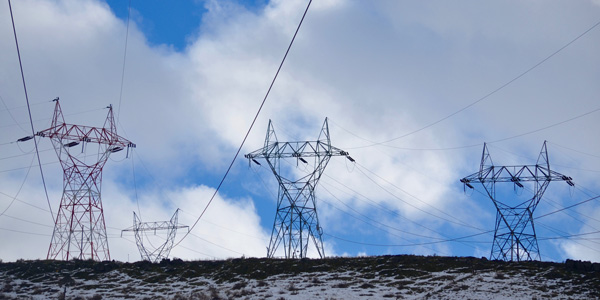By Hudson Sangree
The Pacific Northwest’s March 1 price spike “should serve as a wake-up call” of the region’s coming capacity shortage, power industry consultant and former Bonneville Power Administration chief Randy Hardy warned in April.
Hardy reported that bilateral March 1 day-ahead peak prices at the Mid-Columbia trading hub broke $900/MWh, driven by natural gas prices of $160/MMBtu. By comparison, CAISO day-ahead prices that day ranged from about $38 to $82/MWh, holding that high for only one evening interval. (See Cold Forces NW to Dip More Deeply into EIM as Avista Joins.)
On Wednesday, the Western Electricity Coordinating Council Board of Directors received a briefing from Operating Committee Chair Richard Hydzik on preliminary findings of the OC and the Market Interface Committee regarding the event. “The question was, was there a capacity issue related to this?” asked Hydzik, principal transmission operations engineer with Avista.
The answer is still up in the air. Hydzik noted the region had adequate reserves during the event, and his presentation focused on the temporary supply constraints.
The event occurred during the first week of March, with unusually low temperatures that were closer to those in a typical January. The cold snap led to high demand for natural gas and electricity. At the same time, utilities were doing maintenance or had taken assets out of service during a time that normally sees lower demand.
Hardy’s report noted that the high prices “and the capacity shortage that they reflected, occurred despite all the soon-to-be retired PNW coal plants operating at maximum capacity.”
Hardy cited research by analysts E3 that predicts load growth and announced coal plant retirements could leave the PNW with an 8-GW capacity deficit by 2030 without new dispatchable capacity. That would increase the region’s loss-of-load probability (LOLP) to 48%, he said, noting that WECC utilities’ normal reliability standard is a 5% LOLP.
Hardy said the situation is complicated by moves by Oregon and Washington lawmakers to prevent the building of new gas-fired generation. Hardy said the region could be limited to wind and solar for new energy resources and batteries and pumped storage for new capacity.
Shoulder Month Surprise
Hydzik told the WECC board the March 1 price spike was attributable in part to a lack of south-to-north transfers on the DC Pacific Intertie, which was down for maintenance. A major gas pipeline moving fuel from British Columbia into Washington was running at 80% capacity because of an explosion last fall, and one 730-MW unit at the coal-fired Centralia (Wa.) plant had been taken offline. Balancing authorities were serving native demand and limiting exports.
“So, this is March. Typically, it’s a shoulder month,” Hydzik said. “Six months earlier you plan all of your maintenance to be out of this stuff [before summer demand hits]. Once you take some of these facilities down, you cannot quickly restore them, and you’re simply out of service.”
But the BAs and the Northwest Power Pool Reserve Sharing Group had ample reserves. No emergency alerts were called, and transfers were flowing into the region. BC Hydro “saw this coming,” Hydzik said, and sent an additional 2,000 MW into the U.S. from Canada, reversing the predominant flows on the BC Intertie as the utility’s Powerex marketing arm reduced purchases and boosted exports to take advantage of the surging market.
“Good for them,” he said. “Maybe not so good if you’re south of the border. …
“So, what did we find so far?” he said. “Everyone in the Northwest had more than adequate reserves. … Just because something was expensive doesn’t mean it wasn’t available.”
Gas supplies were constrained, and coal plants and other resources have been retired. Additional findings will be presented at a future meeting, he said.
Director Jim Avery said the situation had raised concern at WECC and may be a sign of things to come.
“Here we are in the shoulder months experiencing some of the bigger problems,” Avery said. “These are going to become the new norms.
“We’re going to have different resources that perform differently in different seasons,” he said. “And yet we’ve been operating the system the same, and that is, ‘Well, shoulder months, that’s when we do our maintenance.’ We’re going to have to rethink that because during peak load conditions in the middle of the day, we may have an abundance of resources [such as solar] that we’ve never had before. And that’s just the new norm.”
Hydzik said he agreed with Avery’s comments.
Hardy offered several potential actions to respond to the capacity shortage, including adding transmission to access Montana or Wyoming wind power; an overhaul of “fossil fuel era” planning and operating metrics; and incentives for ramping resources.
A lack of action would leave the region praying “for rain and mild weather,” Hardy said.
“Murphy’s law predicts that the next low water year in the PNW will arrive in 2025 as peak coal plant retirement occurs and the PNW [integrated resource plans] defer decisions on construction of new resources waiting for the next cost reduction in carbon-free capacity.”





